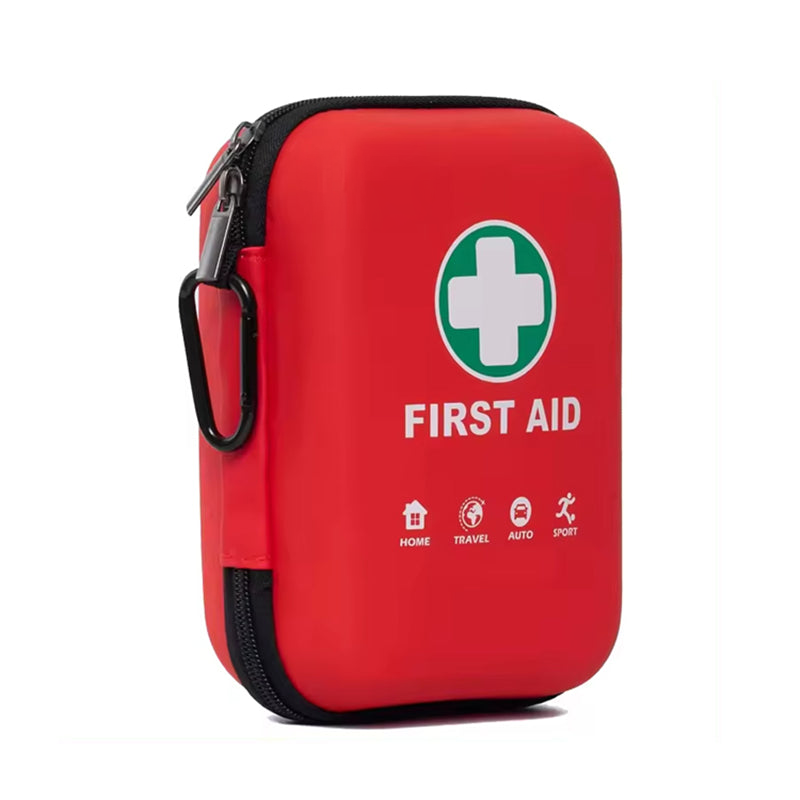Car First Aid Kit Storage and Management

Introduction: How to Properly Store Your Car First Aid Kit and Ensure It's Always Ready for Use?
In modern life, whether it's daily commuting or long road trips, a car first aid kit is an essential emergency tool. It can provide timely medical assistance in the event of an accident, whether it's treating a minor abrasion or offering critical support while waiting for professional help.
However, simply owning a first aid kit is not enough to handle all emergencies—if the medications have expired, the tools are damaged, or the kit is stored improperly, it might not be useful when needed most.
Therefore, proper storage and management of the car first aid kit to keep it in top condition is something every car owner needs to pay attention to.
This article will provide detailed guidance on the best storage locations, regular checks, and updates to help you maintain a "life-saving kit" that is always ready for action.
Recommended Storage Locations: The Best Places to Store Your First Aid Kit in the Car and How to Prevent Moisture and Damage
The storage location of your car first aid kit directly affects its effectiveness and the condition of its contents. Here are some practical suggestions to help you find a safe and convenient "home" for your kit inside the car:
1. Avoid High Temperatures and Direct Sunlight
In the summer, the temperature inside a car can exceed 50°C, especially in areas like the dashboard or rear window where direct sunlight hits.
High temperatures can accelerate the deterioration of medications, such as pain relievers and anti-inflammatory drugs, making them ineffective.
Even some first aid supplies like tape or plastic packaging can melt. Therefore, it is recommended to store your first aid kit in the trunk storage compartment, under the seat, or in the shaded area of the center console, as these places are relatively cooler and protected from direct sunlight.
2. Ensure Easy Accessibility
In an emergency, every second counts. If the first aid kit is buried under a pile of luggage or stored in an inaccessible corner, it may delay the rescue process.
The ideal storage location should be within arm's reach, such as in the rear compartment of the trunk near the opening or under the passenger seat.
You can also place a small label in the car indicating the "first aid kit location" to help family members or passengers quickly locate it.
3. Secure the Kit in Place
Cars can be bumpy, and if the first aid kit is stored haphazardly, it might slide, tip over, or even cause internal items to scatter. You can use Velcro strips or elastic straps to secure it inside the storage compartment.
If the car has a dedicated storage box, you can also use the dividers inside the box to stabilize the kit and prevent damage from impacts.
4. Waterproof and Moisture-Proof Design
The environment inside the car can become humid, especially near the door seals in the trunk, where rainwater might leak in. Moisture can cause bandages to mildew or medications to lose their effectiveness.
To address this, consider choosing a waterproof first aid kit or storing the kit in a sealed waterproof bag. Many first aid kits on the market come with waterproof zippers, making them ideal for car use.
5. Avoid Heavy Items Crushing the Kit
The first aid kit may contain fragile items such as thermometers, glass-bottled medicines, or scissors. If these items are crushed by heavy objects, they could break or leak, contaminating other supplies.
Therefore, ensure the kit is stored in an independent space, and avoid placing heavy luggage, water jugs, or other bulky items on top of it.
Tips: Personalized Storage Solutions
Depending on your vehicle model, you can adjust the storage solution. For example, in a small sedan, the kit can be stored in the armrest compartment of the back seat, while in an SUV or MPV, it may be more suitable to place it in a net pocket on the side of the trunk.
As long as you follow the above principles, you'll find the best spot for your kit.
Regular Checks and Updates: How to Ensure Medications and Tools Are Effective
A first aid kit is not a "set it and forget it" item; its contents will age over time or get consumed during use. Regular checks and updates will ensure that it is fully functional when needed. Here are the steps and suggestions for checking and updating your kit:
1. Set a Checking Schedule
It is recommended to check your first aid kit every 3-6 months, with the frequency adjusted based on usage. For example, owners who frequently go on road trips should check their kit every quarter, while those who only use it for city commuting can check it every six months. Add the checkup dates to your phone's calendar to create a habit.
2. Check Medication Expiration Dates
Medications are the core of a first aid kit. Items such as painkillers, antihistamines, and antibiotic ointments all have expiration dates. During each check, review the expiration dates on the packaging.
Replace any medications that are near expiration (1-2 months left). Dispose of expired items properly to avoid accidental use. Keep a small inventory list with the names and expiration dates of each medication for easier management.
3. Check the Condition of Tools
Tools in the first aid kit, such as scissors, tweezers, and thermometers, should also be regularly inspected. Are the scissors still sharp? Are the tweezers rust-free? Is the thermometer's battery still working?
If you find any tools are damaged or missing, replace them immediately. Also, check the flashlight (if included) and its batteries to ensure they are operational for use in low-light conditions.
4. Restock Consumables
Common items in daily accidents, such as band-aids, sterile cotton balls, and gauze, tend to run out quickly. When checking your kit, take inventory of how many items are left and restock based on the number of family members and expected usage.
For example, a family of four might need to restock with 10-15 extra band-aids and a small package of gauze to meet unexpected demands.
5. Update the First Aid Manual
Your first aid kit usually includes a basic manual on how to handle common injuries. As medical technology advances, some first aid methods may update—such as changes in CPR chest compression rates.
Consider replacing the manual every 1-2 years or downloading the latest version to keep on your phone for easy access.
6. Record and Manage the Process
Include a checklist in the first aid kit to track each check-up date, items replaced, and any additional notes (e.g., "restocked 10 band-aids"). This will help you monitor your kit’s maintenance and remind you of the next checkup date.
Additional Suggestions: Enhance the Practicality of Your First Aid Kit
- Training Skills: Arrange for family members to attend first aid courses so they know how to use a tourniquet, bandage a wound, etc.
- Customized Content: Add specific medications based on family needs—e.g., inhalers for asthmatic family members.
- Backup Plan: Keep a second first aid kit at home as a backup in case the car kit is forgotten or inaccessible.
Conclusion: Regular Checks and Proper Storage to Keep Your Car First Aid Kit in Optimal Condition
Your car first aid kit serves as an invisible guardian of your travel safety, but it can only be effective if stored properly and carefully maintained. Choosing a cool, dry, easy-to-reach storage location, avoiding exposure to high temperatures, moisture, and heavy pressure, will help prolong the life of its contents.
Regular check-ups every 3-6 months to replace expired medications, restock consumables, and inspect tools will ensure that your kit is always ready for use. By training family members, customizing the contents, and keeping a maintenance log, you can further enhance the kit’s utility.
We hope these tips help you maintain your car first aid kit as a reliable emergency tool, providing added security for you and your family’s travels. Let’s start now by giving this small “life-saving box” the attention it deserves, ensuring it becomes a true hero in times of need!
